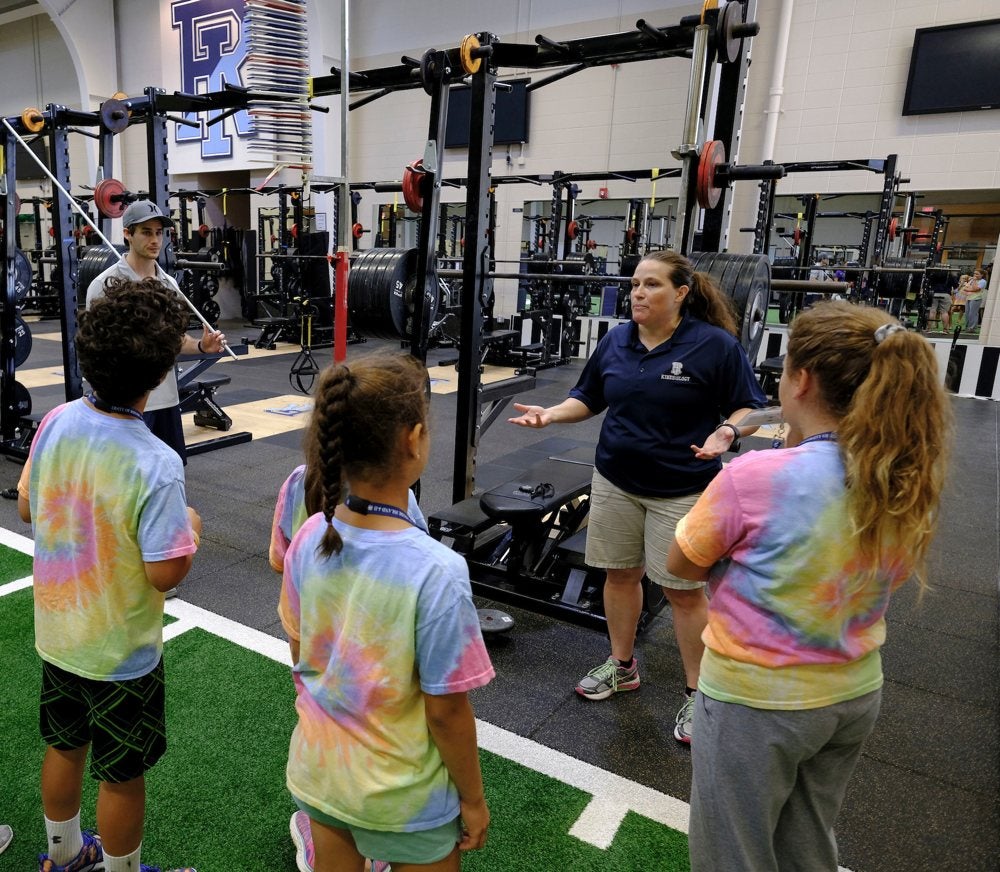KINGSTON, R.I., Aug. 22, 2017 — More than two dozen children from military-connected families around the state test their range of motion, race each other on turf and discover the capabilities of wearable technology during the 4-H Career and College Major Exploration Day held earlier this month at the University of Rhode Island.
The Rhode Island 4-H Program, based at URI’s Cooperative Extension, part of the College of the Environment and Life Sciences, hosted the event for the second year in a row as part of the 4-H Military Partnership Grant. Parents of participants are stationed at the U.S. Naval Base in Newport or are part of the state’s Army and Air National Guard units, said Heidi Wright, Rhode Island 4-H program coordinator.
This year’s workshop focused on health- and science-related fields, including kinesiology, physical therapy, nutrition, engineering, chemistry and animal science. “We want to introduce them to all the different college majors and careers, areas they may not be aware of,” Wright said.
The daylong event gives the children hands-on experience with URI faculty and students from several colleges and programs. One of those students was junior Allison Mosichuk of North Smithfield, an animal science and pre-veterinary studies major who got involved with URI’s 4-H program since last year. “It is very rewarding and allows you to develop skills working with people that you often don’t get in animal science,” she said.
She believes the career exploration day is a good example of that and a great benefit to the children participating. “This is the age when they have to start thinking of what they might be passionate about,” she said. “This will give them a lot of insight.”
On the way to the first session, one of the adults asked: “Does anyone know what kinesiology is?” and was answered with a chorus of “no’s.” Soon after, kinesiology graduate student Grace Walker let them try out the latest technology for testing body composition, just one element of exercise science.
In the physical therapy clinic, the children measured the range of motion of each other’s knees and did squats using TRX straps. In the strength and conditioning room used by URI athletes, the children raced against each other on artificial turf and jumped as high as they could as Disa Hatfield, chair of the Department of Kinesiology, explained the importance of the measurements to athletic performance and exercise science.
After lunch, the children learned about the science of nutrition, engineering of wearable technology, chemistry of sugar and animal science before heading home to consider what they might want to study and what careers they might want to pursue.
“I want to come to URI when I get older,” said one of the children.

